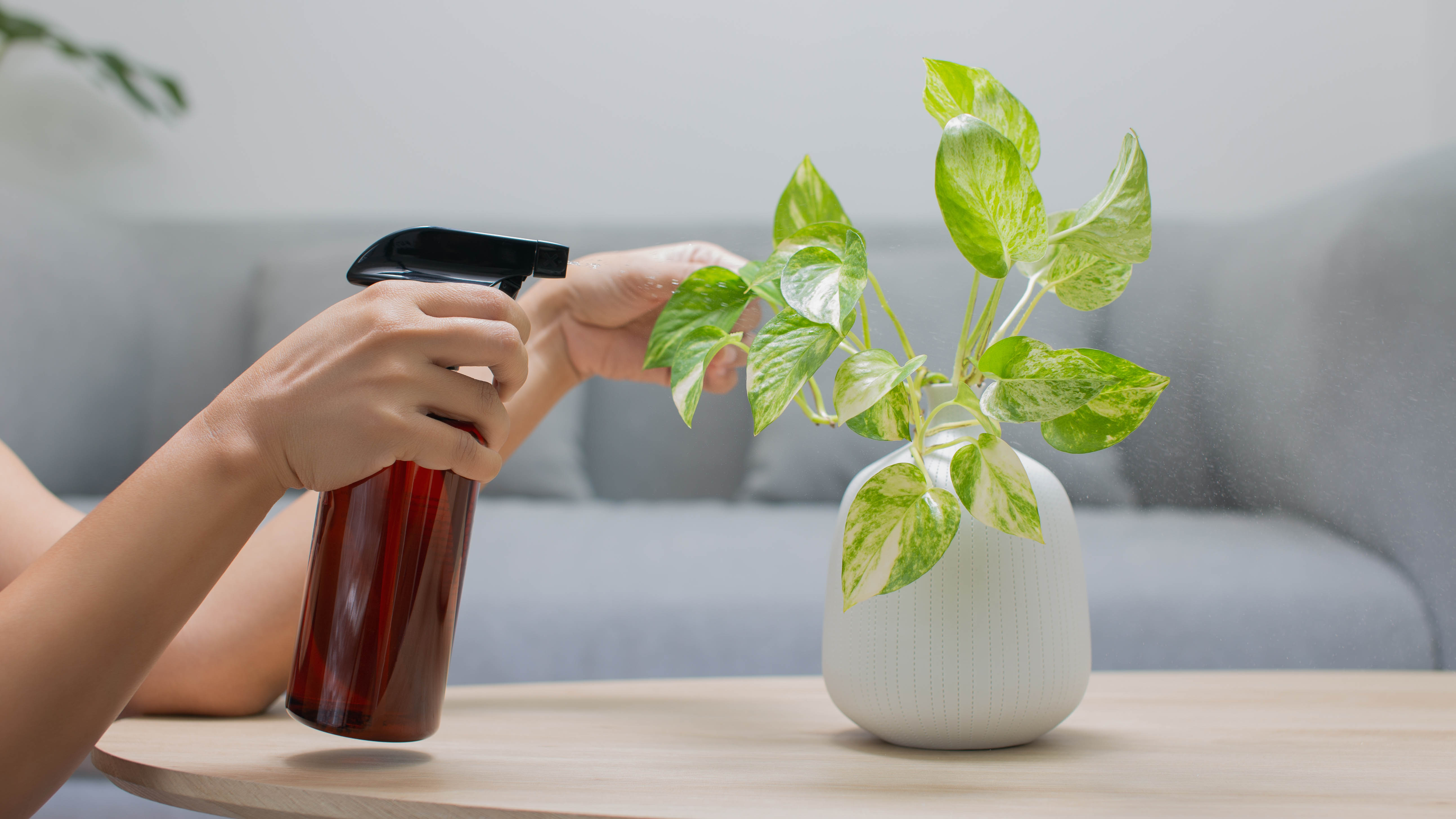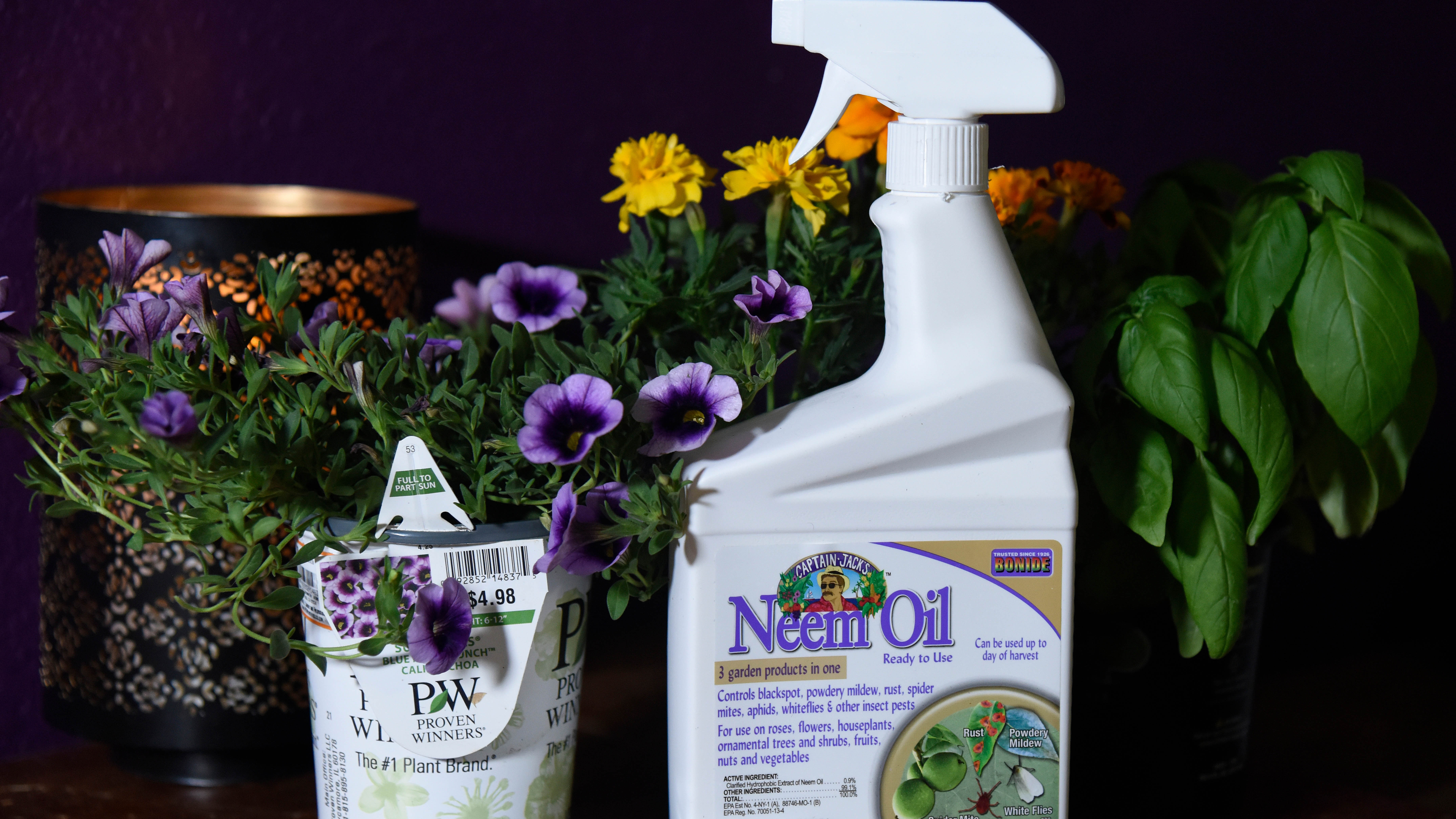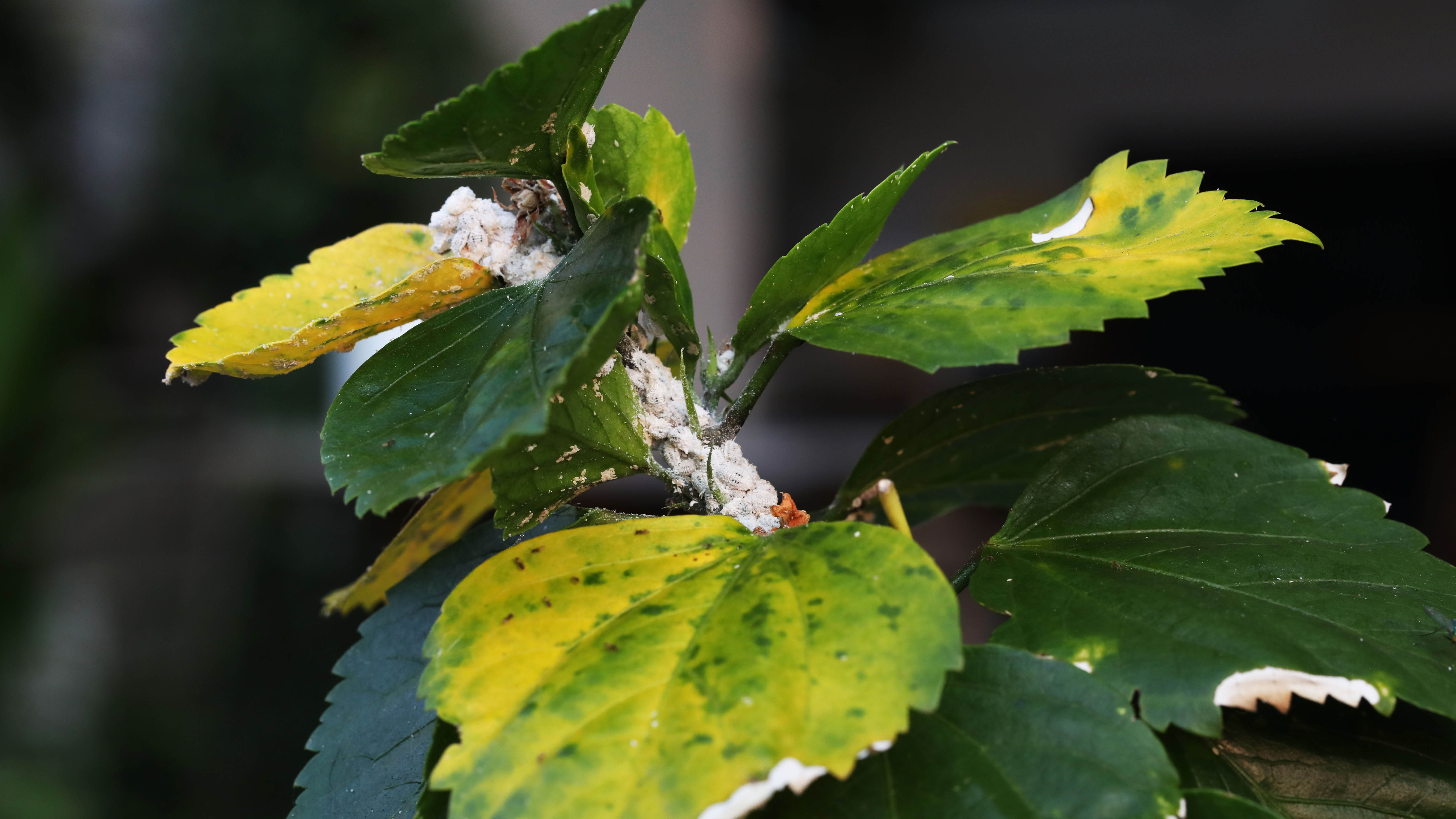How to get rid of mealybugs and protect your houseplants
Get rid of those tiny pests fast!

If you spot tiny white bugs on your houseplants, you’ll need to know how to get rid of mealybugs fast.
So what exactly are mealybugs? These cotton-like, soft-bodied insects are often found along the veins of leaves, or stems, sucking the sap out of your lush plants. This often results in stunted leaf growth, yellowing of leaves, infected roots and eventually a dying plant. They also leave behind a sticky residue (honeydew) on foliage which allows the growth of mold. What’s more, they tend to feast on tropical plants and succulents — which are some of the more popular houseplants.
With their fluffy, white appearance, mealybugs can often be mistaken for mold, rather than bugs. In their early stages, they appear as brown or cream colored, and there are hundreds of species that reside in North America alone.
Trouble is, mealybugs can quickly multiply, and take over your entire plant before you know it. That’s why it’s so important to know how to get rid of these pesky bugs to avoid an infestation.
So if you want your lush, beautiful plants to thrive, here are five easy ways to get rid of mealybugs and protect your houseplants.
1. Remove mealybugs from plant

If you have an infestation, you’ll need to remove the mealybugs from your plant. These can be easily removed with a continuous stream of water. Simply take the infected houseplant outside, and spray it down with a strong jet of water using a garden hose or watering can. Make sure you wash the undersides of leaves too, rinsing away any sticky residue left behind, or even dust.
Alternatively, you can do this in the sink using a shower. Just don’t overdo it with the water, and be mindful if you have delicate plants, or those sensitive to a lot of moisture.
Get instant access to breaking news, the hottest reviews, great deals and helpful tips.
2. Use rubbing alcohol

If you only spot a few mealybugs, simply soak a cotton pad or ball in rubbing alcohol, and wipe it on the bugs. This will instantly kill mealybugs, and also wipe off any residue. Experts advise using a solution consisting of no more than 70% isopropyl alcohol, which is effective. Since it dries quickly, it shouldn’t harm the plant.
However, if in doubt, it’s best to test the cotton on one leaf before you apply it to the whole plant to avoid any leaf damage. In any case, you might want to check out these 7 surprising household items to help your plants grow.
3. Spray insecticidal soap

Another effective treatment is to spray insecticidal soap to get rid of mealybugs. Insecticidal soap is a mixture of water and the potassium salts of fatty acids, which are harmless to plants. These soap sprays are mainly used to combat plant infestations, and are particularly effective for killing mealybugs and other soft-bodied insects.
Simply mix insecticidal soap with dish soap (one teaspoon), and water in a spray bottle, before spraying on all areas where you see pesky mealybugs. Ensure you cover the underside of leaves and the stem crevices so you don’t miss a spot. Repeat the treatment every few days until there are no traces of these tiny insects.
You can find insecticidal soap in your local gardening center or online like this Bonide Insecticidal Soap ($9, Amazon), for indoor and outdoor use. As with any gardening treatments, always read and follow guidance on the label to safely use these products.
4. Make a homemade solution

Alternatively, you can make your own, natural pest repellent, and save money in the long-run! In fact, you’re bound to already have these common ingredients in your kitchen cupboards.
To prepare a garlic and onion infusion, simply take one garlic bulb, one small onion, and one teaspoon of cayenne pepper and mix in a food processor or blender to create a paste. Then, mix into one quart of water and leave to ‘brew’ for an hour or even overnight. Next, strain it to remove the pulp, and mix thoroughly before spraying over the infected plant parts. This should get rid of mealybugs and traces of residue.
Again, first test the solution on two or three leaves before spraying the entire plant, to see if it will affect it. If it doesn’t react, then it’s safe to use. What’s more, the mixture can be stored for up to one week in the refrigerator if you need to repeat the treatment.
5. Apply neem oil spray

Similarly, you can spray neem oil to get rid of mealybugs. Neem oil derives from the neem tree, and it is commonly used as a natural, non-toxic pesticide, as well as in medicinal and beauty products.
Spray neem oil to cover the affected parts of the plant, not forgetting the undersides of leaves to kill any eggs. Once the oil is sprayed onto the plant, this will suffocate mealybugs and any other pests, or disrupt their feeding abilities. While it has an immediate effect, the downside is that it stops working after it dries — meaning you’ll have to reapply.
Neem oil pesticides are available in different applications, so it’s important that you read the instructions before use. Some neem oils are "ready to use'' in a spray bottle that you can apply directly to your houseplants. While others are concentrated, needing to be diluted with the required amount of water and common dish soap first. Once mixed well, pour into a spray bottle before using on the affected areas. Neem oil is usually affordable to buy in superstores, and safe to use on homegrown vegetables, like this Natria 706250A Neem Oil Spray ($7, Amazon), to prevent bugs and diseases.
Of course, if all fails, and your roots are badly infested, it's best to dispose of the plant. This will keep the mealybugs from spreading to your other plants.
What causes mealybugs on plants?

Typically, mealybugs are attracted to certain plants with high nitrogen levels and soft growth. In addition, they prefer to feed on plants with an abundance of juices, such as citrus trees, tropical species and even mango leaves.
Mealybugs are often found in warmer conditions such as in greenhouses or indoors where they can infest our precious houseplants. You might also spot mealybugs if you overwater or over-fertilize your plants, as they are highly attracted to moisture. In this case, it’s best to water your plants sparingly, and always follow the care instructions for each species.
More from Tom's Guide
- Be sure not to make these 9 mistakes when repotting a plant
- These 7 plants will create more privacy in your backyard
- Check out how to repot succulents if they need a new home

As the Homes Content Editor, Cynthia Lawrence covers all things homes, interior decorating, and garden-related. She has a wealth of editorial experience testing the latest, ‘must-have’ home appliances, writing buying guides and the handy ‘how to’ features.
Her work has been published in various titles including, T3, Top Ten Reviews, Ideal Home, Real Homes, Livingetc. and House Beautiful, amongst many.
With a rather unhealthy obsession for all things homes and interiors, she also has an interior design blog for style inspiration and savvy storage solutions (get rid of that clutter!). When she’s not testing cool products, she’ll be searching online for more decor ideas to spruce up her family home or looking for a great bargain!
